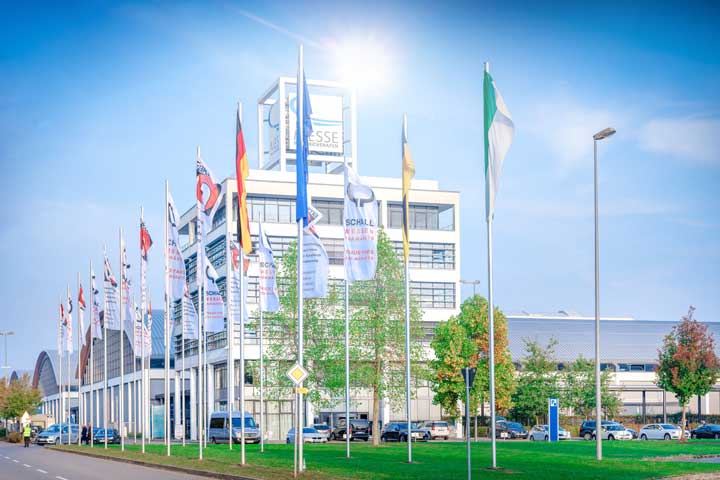Trade fair highlight 07. October 2024
PET-Processing and Recycling at the IWK: Potential of extended PET recycling
1 / 2

Maurice Lacroix Aikon Tide Blue Black (Source: Maurice Lacroix)
2 / 2

Dress by Iris van Herpen made of recycled Evian PET-Bottles (Source: Evian)
The IWK is working on tailored solutions to keep PET that is not fulfilling the quality standards of the bottle-cycle and ocean-bound bottles in the loop. The obtained rPET can be processed through various technologies and contributes to enhancing circularity.
Ocean-bound rPET
Together with the Tide Ocean SA, the IWK developed a process to obtain high-quality textiles and technical parts from ocean-bound PET bottles. The filament finds application in carpets, bags, and watch bands. To also allow the manufacturing of oceanbound rPET via injection molding, design and processing guidelines were developed to avoid too fast crystallization and the generation of warpage and cracks. A successful example is a watch from Maurice Lacroix, where bezel, housing, crown, end, and closure parts are made from tide material.
Non-compliant rPET
In cooperation with Evian and the designer Iris van Herpen a dress made from a combination of rPET filament and silk that resembles a sparkling water surface was produced and shown at the British Fashion Awards. In another approach, PET was used as a replacement for PA to backinject UD-Tapes in the production of surf fins. The resulting parts show comparable properties to the original parts while offering a sustainable material alternative.
Material analysis
The IWK explores methods for the quality analysis of rPET. As an example, a correlation model for NIR to determine intrinsic viscosity and humidity directly from granules or flakes was developed
together with Metrhom AG.
Ocean-bound rPET
Together with the Tide Ocean SA, the IWK developed a process to obtain high-quality textiles and technical parts from ocean-bound PET bottles. The filament finds application in carpets, bags, and watch bands. To also allow the manufacturing of oceanbound rPET via injection molding, design and processing guidelines were developed to avoid too fast crystallization and the generation of warpage and cracks. A successful example is a watch from Maurice Lacroix, where bezel, housing, crown, end, and closure parts are made from tide material.
Non-compliant rPET
In cooperation with Evian and the designer Iris van Herpen a dress made from a combination of rPET filament and silk that resembles a sparkling water surface was produced and shown at the British Fashion Awards. In another approach, PET was used as a replacement for PA to backinject UD-Tapes in the production of surf fins. The resulting parts show comparable properties to the original parts while offering a sustainable material alternative.
Material analysis
The IWK explores methods for the quality analysis of rPET. As an example, a correlation model for NIR to determine intrinsic viscosity and humidity directly from granules or flakes was developed
together with Metrhom AG.

